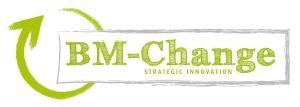 In the past three years BM-Change partnered in the Waternomics project. In this EU-funded project, a consortium of three Universities, an Italian airport, a Greece municipality and four SME’s researched how smart water systems could help households and businesses with managing drinking water more efficiently. The goal of BM-Change was to help maximising the economic impact of the project. With the creation of spin-off company iSensit, plans for a joint venture in Southern Europe and collaboration with Simaxx, a Dutch Smart Building platform provider, this mission has been accomplished.
In the past three years BM-Change partnered in the Waternomics project. In this EU-funded project, a consortium of three Universities, an Italian airport, a Greece municipality and four SME’s researched how smart water systems could help households and businesses with managing drinking water more efficiently. The goal of BM-Change was to help maximising the economic impact of the project. With the creation of spin-off company iSensit, plans for a joint venture in Southern Europe and collaboration with Simaxx, a Dutch Smart Building platform provider, this mission has been accomplished.
Smart water for everyone
The project developed a smart water platform, a combination of meters and sensors, linked data platform and applications, that collected, stored and analysed water availability and consumption related data and turned it into actionable information for the various end-users. The platform has been tested in four distinct environments, being an Italian airport, Greece households, an Irish University building and an Irish secondary school. During the project we investigated if and how the platform as a whole could create value and how the individual components or a part of the platform could be marketed.
Three factors that made business design difficult were:
Virtual team: The project team consisted of people from various organisations with different cultures and backgrounds, working in different European countries. The project team worked remotely and would meet three to four times a year in person. Establishing a shared vision and common business interest proved to be difficult. Organising virtual workshops and working with subsets of partners helped with developing joint exploitation plans for platform components.
Technology driven: As an ICT research project, the majority of the budget and resources was reserved for the development and validation of the platform. Also, majority of the staff had a technical background. Although project members understood the need for adopting a user driven approach, most team members were not in the position to make business decisions. An exception were the SME’s in the consortium who had short decision making processes and could act quickly on business opportunities. By involving external stakeholders and market parties early in the project, a better fit of the project results with market demands was established. The focus of the project members was broadened to not only user requirements but also including more attention for the business context of the platform.
Business ownership: While it was contractually defined which party would bring in what technology or other intellectual property (IP), ownership of the IP developed during the project needed to be established on the fly. While the platform was still under development, it was unclear what business value it would contain. As a result, it proved difficult to let people take business ownership in the early stages of the project. By organising value proposition design workshops for each of the expected exploitable results early in the project, project members were encouraged to consider application of their work beyond the water domain. One example is the use of the Internet of Things platform for fitness centres.
Lessons learned:
• Involve and engage with external stakeholders as early as possible and continuously. This is your connection with the market and will lead you to your launching customer.
• Find business owners for the exploitable results of your project as soon as possible. These are the people that will commit to find and ensure exploitation of project results once the project is over.
• Create a diverse team covering all necessary skills required for developing great value propositions. Try to include experts from all kind of domains like software and hardware engineers, UX designers, business designers, sociologists and marketing experts. If you cannot include them from the partners in the project directly, try to collaborate with external parties or projects.
• When considering a market engagement strategy, don’t only focus on the usual businesses, in this case water utilities and large water consumers in industry. Project results can be of value for entire different industries e.g. like the acoustic leakage detector for an ambient assisted living solution for elderly living alone.
Do you want to know how you can maximise the impact of your innovation project and ensure sustainable project results? Contact us today.

